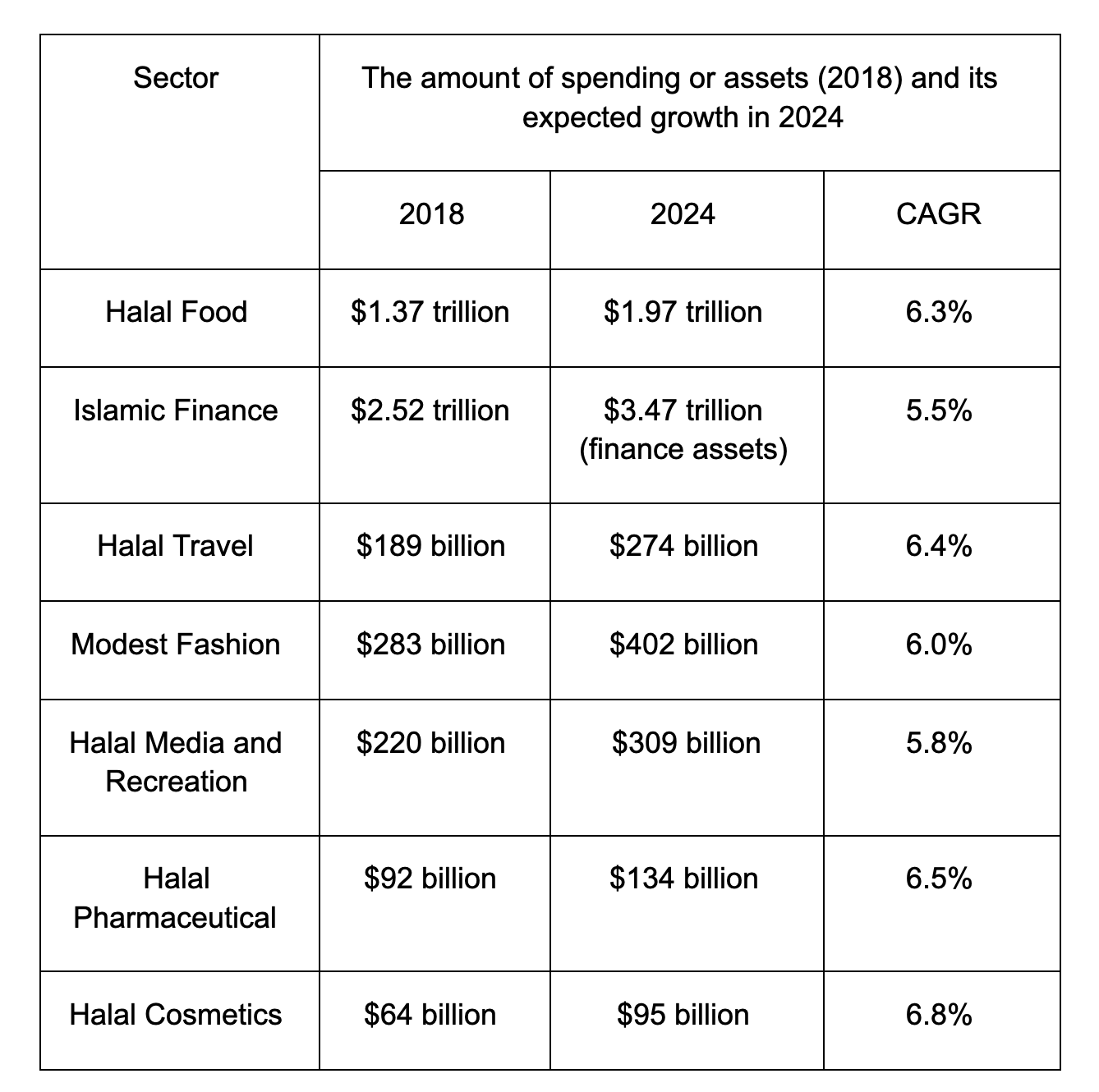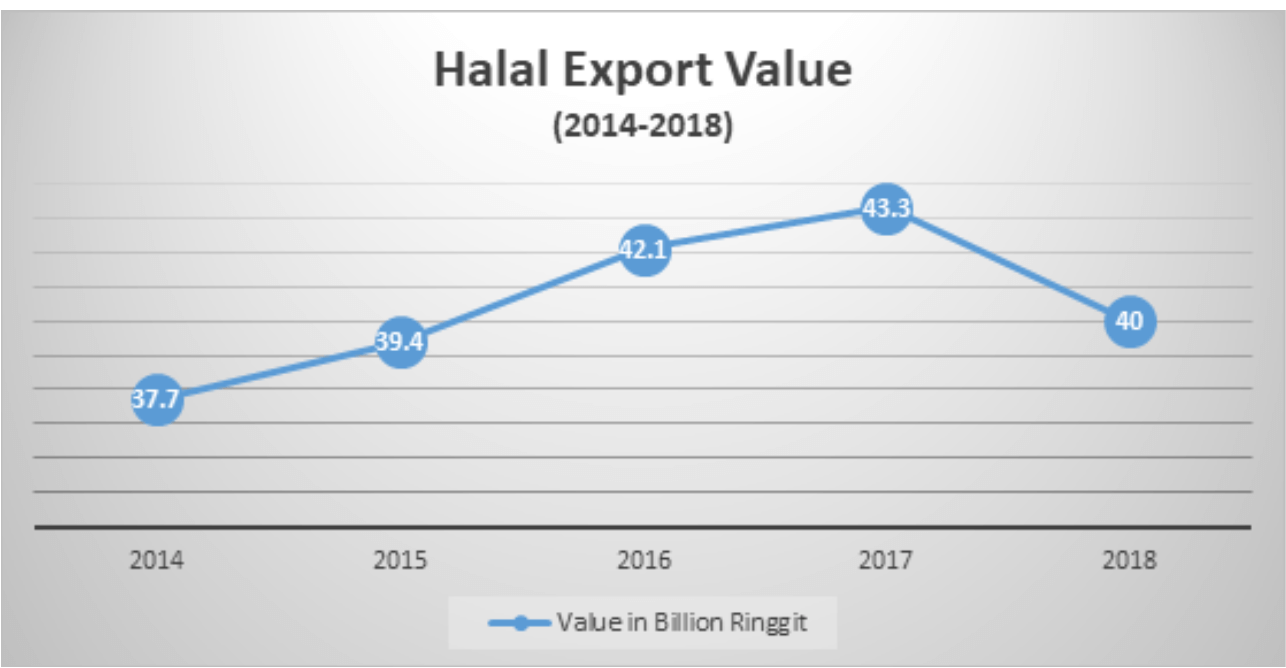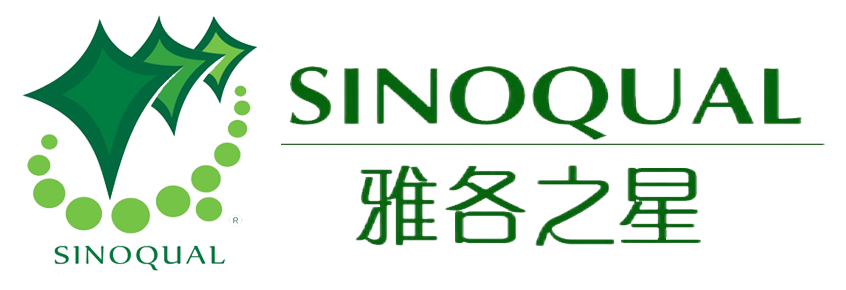The global beauty industry is undergoing a transformation as consumers increasingly demand products that demonstrate transparency, ethical sourcing, and ingredient purity...
Does the Halal industry affect the Malaysian economy?
2025-05-15
In recent years,HalalThe industry is developing rapidly around the world.2016Year to2022Year,HalalThe product market is expected to grow28%。HalalThe industry's market segment has also expanded to non-Muslim areas.HalalThe industry is inclusive to both Muslims and non-Muslims, so now we see it in non-Muslim countries and regions.HalalThe development of industries is very common. An obvious example isHFCE(EuropeHalalFood Commission) has been certified400Several European food companies. TodayHalalIt has become a global mainstream.
As for MalaysiaHalalscenery,2017MalaysiaHalalIndustry contributes to MalaysiaGDPCovenant7.5%。HalalThe significant contribution of industry to Malaysia’s GDP indicates that Malaysia has successfully capitalized on its potential as a Muslim-majority country. Furthermore, these facts will be very interesting to observe becauseHalalIndustry is now seen as the engine of economic growth. Therefore, this paper will comprehensively examine MalaysiaHalalThe development of the industry. It will start from the definitionHalalThe next section will briefly discuss the worldwideHalalindustry and will continue to outline Malaysia’sHalalindustry and its impact on the economy.
A、 Introduction
HalalThe existence of the industry has become a matter of debate among some groups of people. Some people believe thatHalalThe emergence of industry is only for economic purposes. Some people also believe that its existence isHalalProduct demand forcesHalalThe industry has expanded its scope to include various products and services such as pharmaceuticals, cosmetics, travel, finance, and even fashion. This phenomenon is due to increased awareness among Muslims about what they can and cannot consume. In fact, this economic growth is very helpful to Muslims. AnotherHalalThe factor that has made the industry a big business is the estimated growth of the Muslim population. According to the Pew Research Center (Pew Research Centre), the number of Muslims worldwide is expected to grow75%,from2010Yearly16100 million to2050Yearly28100 million. According to the Oxford Dictionary,HalalThe term can be defined as meat slaughtered according to Muslim law. It also refers to meat slaughtered according to Muslim law.Halalsomething that is acceptable to the regulations. Based on these two definitions,HalalRefers to a set of dietary laws based on Muslim law that help Muslims distinguish what to eat, use or consume. The materials and processes used to make a product or provide a service also determine whether a product or service is consideredHalalAccording to the above explanation,HalalIndustry can be defined asHalalRegulations in the industry in which you conduct business.
ProductionHalalThere are two things to consider when it comes to products, which are the substance and the process.HalalLaw, some substances are banned in nature, such as dog and pork. While other non-banned substances must go through several processes to becomeHalalFor example, a cow must be eaten according toHalalThe concept applies to all forms of food, consumer products, including cosmetics, personal care products, and pharmaceuticals. It also applies to trade or business processes, as well as services.
As the Muslim population is expected to increase,HalalIndustry demand is likely to increase. According to the Pew Research Center (Pew Research Centre), the number of Muslims worldwide is expected to grow75%,from2010Yearly16100 million to2050Yearly28100 million.HalalThe growing demand for products has forcedHalalThe industry will expand its scope to include various products and services such as pharmaceuticals, cosmetics, tourism, finance, and even fashion.
B、 worldHalalIndustry Overview
HalalProduct spending can be used as a measure of the worldHalalOne of the indicators of industrial development.DinarStandardPublished2019/2020Global State of Islam Report,2018to2024Year, globalHalalProduct spending is likely to increase at a projected CAGR of6.2%The following table shows2018to2024Year6Global spending or asset growth expectations for different economic sectors.

As can be seen from the above table,HalalAll economic sectors of the industry will have a positive trend in the near future and their growth rate will not be lower than5.5%.AlthoughHalalThe main consumers of the products are Muslim populations in Muslim-majority countries, but some sectors in the table above are mainly in Muslim-minority countries.HalalIn terms of food, Brazil and Australia are theOIC) countries are the main exporters of meat and live animals, with export values of55billion US dollars and24Despite ranking high among other countries, Brazil still faces challenges in complying withHalalA question of standards.2017Year3In June, Brazil's federal police announced that influential meat companies were allegedly paying health officials to ignore various abuses that could jeopardize the safety and certification of meat shipped to every corner of the world. Following the scandal, Saudi Arabia immediately suspended imports of Brazilian beef and poultry (Newsweek). To address this issue, universally accepted standards must be developed by global certification bodies to avoid duplication of certification costs and reduce complexity (Global Islamic Economy Report).2018/19》)。
In addition,HalalIn terms of clothing, “Made in China” products are sold in OIC countries.HalalRanked first in the list of clothing exporting countries, with a value of106This amount is far behind the second place, India31US$ billion led the way, with Türkiye leading the way with23US$ billion followed closely behind.HalalFashion products also play an important role in exports. This part is mainly divided into three parts:a). Toys, games and sports,b). Printed books, newspapers and pictures, andc). Photography or film supplies. China36The United States leads the way with5.56US$ billion followed closely by the United Kingdom4.5The next two sectors are also the same.HalalPharmaceuticals andHalalCosmetics, the dominance of exporters to the OIC still belongs to Western countries. Among the main exporters to the OIC, Germany and France are40US$ billion, of which France and the Organization of the Islamic Conference exported40US$ billion. Exports to OIC countriesHalalBefore cosmetics5The country is France (26billion US dollars), UAE (12billion US dollars), Germany (11billion US dollars), the United States (10billion) and China (8billion US dollars).
Some Muslim minority countries, especiallyHalalThe dominance of the industrial sector of the economy clearly shows that even in countries with smaller Muslim populations,HalalThe industry still has room for development.
C、 MalaysiaHalalIndustries and their impact on the Malaysian economy
MalaysiaHalalThe development of the industry began1974In 1996, the Islamic Affairs Research Center began to issueHalalcertificate. Over the years, this country has recognizedHalalThe urgency and potential of the industry.HalalIndustrial Development Corporation2006Established in 1996, it shows that Malaysia has becomeHalalThe agency is under the Ministry of Economic Affairs and is responsible for coordinating Malaysia'sHalalOverall development of the industry (HDC Global)。
The government is promoting MalaysiaHalalIndustry support is clear. The latest and clearest evidence is2008-2020YearHalalIndustrial Master Plan (HIMP), whose vision is to make Malaysia a globalHalalThe expected result of this policy is to enableHalalBecome a new source of economic growth (TREESIn addition, Malaysia also hostedHalalThe two most important annual events in the industry, namely the Malaysia InternationalHalalExhibition (MIHAS) and the worldHalalforum(WHF).since2003Since 2000, both countries have been establishing the country as the new mainstreamHalalplayed a key role in the industry's reputation as a global reference and trade hub (2020In addition, Malaysia is a globalHalalThe seriousness of the center is also reflected in the establishment ofHalalPark, a community of manufacturing and service businesses located on public property with the purpose of maintainingHalalProduct integrity.2010Year to2017Year,HalalThe total investment in the park reached132.7billion Malaysian riyals, received in Malaysia14A Hjalmar.HalmasIt is a pairHalalCertification of a park operator who has successfully complied withHDCdesignatedHalalIn this regard, the Malaysian government has formulated tax incentives to increaseHalalThe park's appeal for certain products, such as livestock and meat production, probiotics, specialty processed foods, pharmaceuticals and nutraceuticals, cosmetics and personal care, andHalalIngredients (HDC Global)。
The Malaysian government promotesHalalThe results of industrial development can be seen from the contribution to GDP andHalalThe export value can be seen in two aspects. In terms of contribution to Malaysia's GDP,HalalThe industry has shown positive trends in recent years. Dr. Khalid Abdul Hamid, Director of the Services Department of the Ministry of Economic Affairs (the Star,2019Year) indicates that2017In 2018, Malaysia's contribution to Malaysia's GDP was7.5%, which is expected to grow this year1.2%, or will reach8.7%。
At onceHalalIn terms of exports,2010to2018MalaysiaHalalThe number of exports has gradually increased. However,Hanisofian Aliasexplain,2018In 2019, the index declined slightly from the previous year due to challenging times in the palm oil industry, including lower palm oil derivatives (Malaysian Reserve,2019The table below shows the2014to2018YearlyHalalExport value.

Sources:HalalIndustrial Development Corporation (HDC)。
although2017YearHalalExports increased compared to the previous year, butHalalThe proportion of exports to Malaysia's total exports declined for two consecutive years. This was due to the rapid growth of Malaysia's total exports.2016In 2017, the contribution to Malaysia's total exports was5.3%, the total export volume is7870MYR billion. In the next two years,9354MYR billion, accounting for4.6%,9980MYR billion, accounting for4.0%。
In addition, the Malaysian governmentHalalThe full support of the industry development has made Malaysia a leader in the global Islamic Economy Index. This index comprehensively reflects which countries are currently best positioned to respond to the trillion-dollar global opportunity. It measures73The strength of Islamic economy in a country involves supply and demand drivers, governance, awareness and social factors.49A weighted combination of key indicators (Global Islamic Economy Report2019/20Two Middle Eastern countries followed Malaysia in first place, with the United Arab Emirates in second and Bahrain in third.
in conclusion
The world has recognizedHalalIndustry is the new engine of economic growth. This can be seen from the fact thatHalalThis increase in products is seen not only in Muslim-majority countries.Halalis not just a label.HalalLabels indicate that certain products are of good standard and quality. Many countries have recognizedHalalThe urgency and potential of the industry are now competing to becomeHalalThis is also to meet the increasing market demand in recent years.
In addition, over the next four years, the worldHalalThe consumption of products will increase. It is predicted that even countries with smaller Muslim populations willHalalFor example, Brazil and China will be the main players in the OICHalalA major exporter of meat and clothing.
Malaysia is a global leaderHalalEconomic indicators, since1974Since the year,HalalThe development of the industry has a long history.HalalIndustrial Master Plan (2008-2020Malaysia aims to become a globalHalalTo achieve this goal,HalalIndustrial Development Corporation (HDC) was established,HDCA bold move under the leadership ofHalalPark. In fact,HDCTo MalaysiaHalalThis has made a positive contribution to the growth in export value.HalalExport volume from2010Yearly152A significant increase of MYR1 billion163%,2018Reached400billion Malaysian ringgit. It will help the country have a greater competitive advantage, leading to higher wages and more job opportunities. In addition,HalalThe industry's contribution to Malaysia's GDP is expected to rise from7.5%Increase to2020Yearly8.7%, which also emphasizesHDCIn addition,HalalThe park and its tax incentives areHalalThe industry's substantial investment has contributed to2010Year to2017The investment amount is132.7It has a total of RM100 billion in Malaysia.14HomeHalmas(Halalpark operators). This meansHalalThe park has brought more job opportunities. Furthermore, Malaysia must maintain this positive trend and increase its efforts to always respond to market demand.
